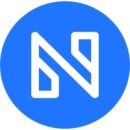There’s a reason big data is such a big deal in the tech world.
Being able to clean, analyze and act on insights gleaned from ridiculously large data sets enables companies to optimize their operations and better serve their customers. We recently spoke with four Los Angeles tech companies to learn more about the work they’re doing with data and the real-world impact it’s having on their product and customers.

Bird’s dockless electric scooters are designed to help reduce gridlock, cut pollution and solve last-mile public transit problems — all while being fun to ride. Bird operates in over 100 cities around the world, and in those places a charged scooter is never too hard to find. VP of Data David Allison said this is all made possible by leveraging large quantities of internal and external data.
How is your company leveraging big data as part of your product?
Bird is all about micro-mobility: the kind of short-distance travel that gets you from your lunch meeting back to the office and makes exploring a new city with your friends fun and easy. But how do we make sure that when you’re ready to ride a scooter is nearby, charged and available? The answer is data.
Bird is operating in more than 100 cities globally, and people took more than 10 million Bird rides within the first 12 months of the company’s existence. This scale and rapid growth results in operational complexities that can only be addressed with real-time, accurate and accessible data, machine learning and analytics. We blend data from our operations with data about the weather, pedestrian traffic, points-of-interest and more to ensure riders have access to a Bird when and where they need it.
Data and analytics are the foundational underpinnings of our business.”
What is an example of a real-world impact you've been able to have that would not have been possible without big data?
Our mission is to make cities more livable by reducing car usage, traffic and congestion. We are providing a transportation alternative that gets people out of cars at scale. This shift is taking place due in large part to the availability, accessibility and overall enjoyable experience of Birds. Data and analytics are the foundational underpinnings of our business. With data, we are able to determine where and when Birds should be available, opportunities for city infrastructure improvements as well as how to help boost usage of existing public transit options.

Taboola’s discovery platform leverages deep learning, AI and a massive data set to help people discover new and engaging content and enable brands and publishers to reach more people. One of the company’s tools enables digital newsrooms to better understand what topics they’re readers are likely to engage with. R&D Director Gabriel Nizzoli said big data plays a big part — no pun intended — in this tool.
How is your company leveraging big data?
Big data for Taboola is both an opportunity and a challenge. One segment of our clientele are large digital newsrooms from around the world. We have the capability to process their current activity and analyze trends, topics and traffic for their user base. This is not easy, since the volume of data can reach many terabytes at peak times on a busy news day. But the reward is that we can analyze traffic patterns and generate complex topic models to see how users engage with content and better understand how different topics evolve over a long period of time.
In many instances, our tools have helped digital publishers choose the topics covered by their journalists to better satisfy the interests of their readers.”
What is an example of a real-world impact you've been able to have that would not have been possible without big data?
It is usually difficult for newsrooms to make informed decisions on how to serve their readers. In many instances, our tools have helped digital publishers choose the topics covered by their journalists to better satisfy the interests of their readers. This complexity is compounded by the fact that a given newsroom may not properly understand what their loyal customers prefer to read around the internet. By leveraging big data and machine learning, Taboola is able to aggregate and forecast user reading patterns so that a newsroom can understand what topics are more likely to engage users.

SnackNation helps offices around the country — and also folks at home — eat better through its curated and tech-enabled healthy snack delivery service. In addition to shaping everything from its product offerings to packaging, SVP of Technology Aihui Ong said big data also helps the company cut its churn rate.
How is your company leveraging big data as part of your product?
We use data in every part of our business. We collect a lot of consumer feedback from our customers nationwide and have millions of data points telling us what people like about a certain product, what they love about the packaging, etc. With such massive data on health and wellness from across the country, we are able to detect trends much faster and also understand if certain snacks are more popular with certain segments of consumers. For example: We know female consumers prefer popcorn and puffs more than our male consumers. We also use internal data to better understand our customers and use machine learning to predict customer churn.
We are able to detect trends much faster and also understand if certain snacks are more popular with certain segments of consumers.”
What is an example of a real-world impact you've been able to have that would not have been possible without big data?
With big data, we are able to build a predictive churn model to help our member success team more efficiently identify at-risk customers and arm them with insightful data about them. Prior to this predictive model, our member success team had to manually comb through member accounts and make their best guess about who was most likely to churn. With this predictive model, we have improved work efficiency and also prevented customers from churning, hence increasing revenue!
Nativo’s adtech platform is used by both advertisers and publishers to more efficiently distribute, optimize and measure content-based native advertising campaigns. According to Manager of Big Data Engineering Bijith Kumar, the company’s big data capabilities enable it to both provide insights on campaigns to customers and optimize them to ensure peak performance in real time.
How is your company leveraging big data as part of your product?
We leverage big data to collect and process hundreds of metrics and billions of events every day. This allows our partners to monitor and gauge campaign performance, as well as slice and dice data to fine granularity near real-time using our dashboard and reporting tools. We also optimize campaigns and conduct A/B testing using real-time data and various machine learning algorithms, even as the campaign is running.
We leverage big data to collect and process hundreds of metrics and billions of events every day.”
What is an example of a real-world impact you've been able to have that would not have been possible without big data?
Without big data capabilities, we wouldn’t be able to handle the amount of data we process daily, do near real-time processing of it or be able to allow our partners to drill down into it at a micro level. Utilizing big data allows us to collect and process data at a quicker rate, providing real-time campaign insights to our partners. Our system also has a feedback loop that improves campaign management using machine learning and predictive analytics. We are constantly and dynamically changing campaign behaviors depending on the feedback received.
Thanks to big data and data science, we are able to create various recommendations to our ad server to optimize its operation, thereby bettering performance for our brand partners and creating a better yield for our publisher partners.









